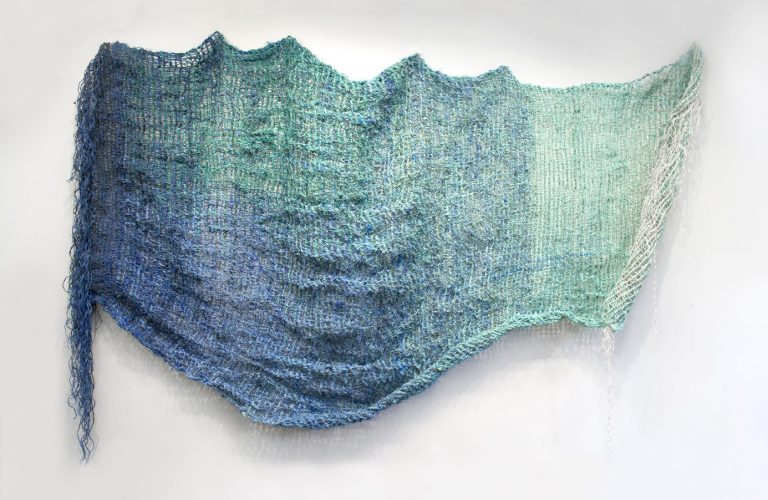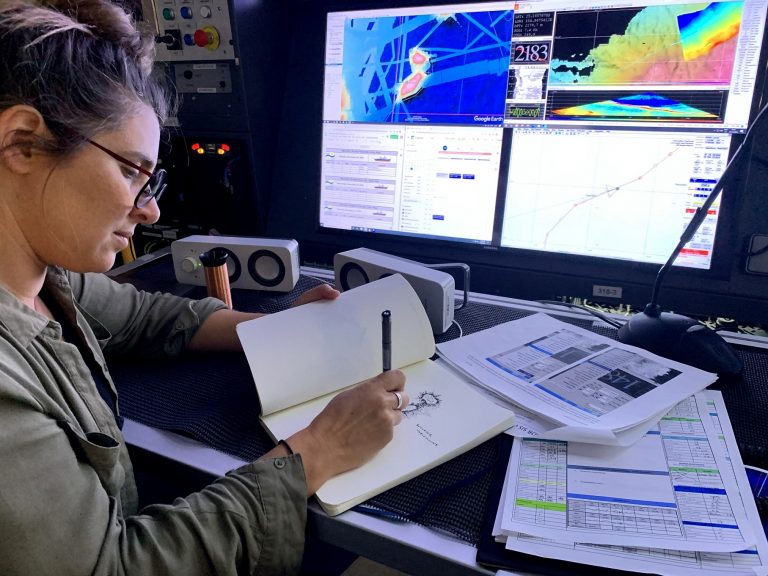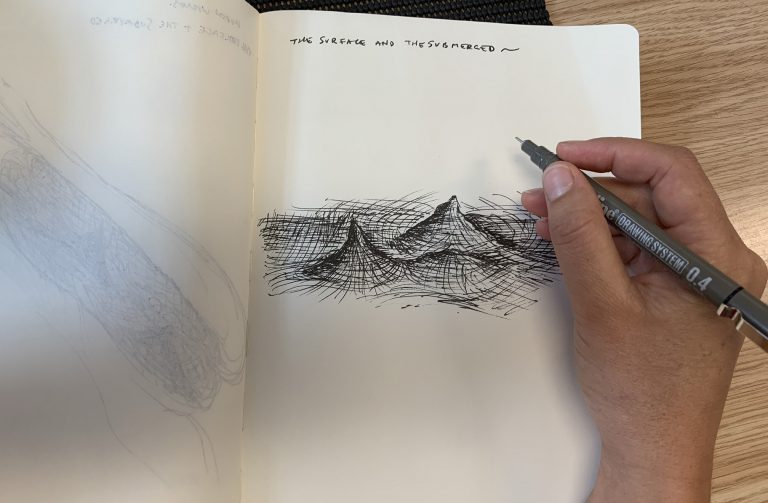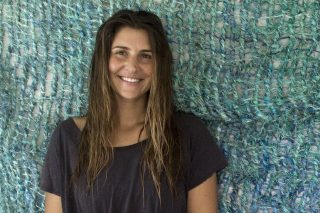Thirty days on the open ocean is something of a dream for an artist whose creative practice is entwined with the sea. It was not until I wiggled my feet into some fresh steel cap slippers, looked ardently at the mooring ropes, and made my way up Falkor’s gangplank that the expedition I was about to embark upon began to feel a little less surreal. I pinched myself and boarded the luckdragon.
My name is Jessica Leitmanis. I am an artist who works sculpturally with marine debris rope. I am besotted by my medium for its character and the dissonance it represents. The rope—having made its way across a restless ocean to an unsuspecting shoreline—will share a tale or two if given the chance. Though alluring in its weathered charm, the picture painted by degrading polypropylene is not a pretty one. I choose to look to this castaway detritus for clues, for insights into contemporary society, as an indicator of humankind’s relationship to the natural world. Much can be gleaned about a society from that which it deems as valueless. My creative practice is a vehicle for self and social reflection. Through my work, I consider how we shape our environment and how it shapes us.

At 7.8 billion humans and counting, we can no longer ignore our sculptural influence on the surface of the earth. Equally so, that which is submerged is heavily influenced by the decisions made above the surface. Whilst onboard Falkor as an Artist-at-Sea, I am working alongside geologists, ecologists, and marine technicians to deepen my scientific understanding of the ocean and its role on planet earth. As a species, the way in which we connect, communicate, and implement our scientific knowledge, will inform the health of the ecosystem that we are all part of.
The focus of this expedition is to deepen our understanding of the environment. Ocean health is integral to life as we know it. As it so happens, the ocean comprises 71% of the earth’s surface. What we know of our submerged landscapes is far less. Whole puzzle pieces remain unturned. Over the coming 30 days, we will be revealing some of the missing pieces and bringing these hazy areas into focus with high-resolution mapping. Measuring the depths of the ocean floor or lake floors is called bathymetry. The approach the scientists and marine technicians use to map these submerged landscapes with clarity involves the sending and receiving of a sound wave, called multi-beam technology. To date, approximately 20% of the seafloor has been mapped in high resolution. There is, undeniably, much more to learn.

Equally important is that which is found above the surface. Alongside our wildlife ecologists, I will be observing and recording sea birds, marine life, and marine debris. With a clearer understanding of underwater terrain, ocean systems, and ecology, we can make more educated decisions relating to the protection of our underwater wilderness and the larger systems they support.
As the clock ticks out on this strange year, the team aboard Falkor will be ‘pinging’ in a new decade in the Tasman and Coral Seas. The pings delivered back to Falkor via the ocean floor will inform some of the first data sets for the 2021-2030 UN Decade of Ocean Science for Sustainable Development and support its seven key outcomes, as endorsed by the United Nations General Assembly.
My time aboard Falkor will explore ideas relating to the environment, sustainability, and our human connection to the natural world. Concepts will come to life through ideation, sketching, and the creation of a series of hand-woven sculptures comprised of marine debris rope. Just as art can challenge the lens through which we see, so too does science. The research vessel Falkor provides an exciting platform for the merging of these complementary disciplines.

Whilst unzipping a bag filled to the brim with my delicacy of choice—marine debris rope— I am struck by the magnitude and gravity of these disciplines. Creativity is boundless. Science is infinite. These are the things that shift the way we think about our planet—shaping how we care for her now and into the future.
I’ve found my sea legs; set up my workspace; the fun begins…

